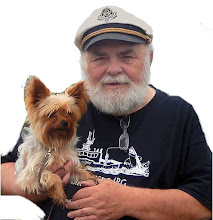 |
| Me and the barge (Gary LeDrew |
Red Tape and Torpedo Nets
Labels:
Celia LeDrew,
Louisbourg,
Red Tape,
stories,
story
Subscribe to:
Post Comments (Atom)
Celia LeDrew BIO
Cecilia (Celia) Margaret LeDrew Born April 1 1917 Louisbourg N.S. Parents Charles Shaw and Bessie Shaw (nee Snow) Celia was the fi...

-
Cecilia (Celia) Margaret LeDrew Born April 1 1917 Louisbourg N.S. Parents Charles Shaw and Bessie Shaw (nee Snow) Celia was the fi...
-
Our First Xmas Tree by Celia LeDrew On Christmas Eve in 1929, the temperature dropped to seven degrees below zero, with a clear, crisp s...
-
"When I was just eight years old, I stumbled upon a young seagull while exploring the beach near my house. Despite being newly hatched...




No comments:
Post a Comment